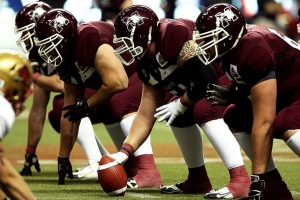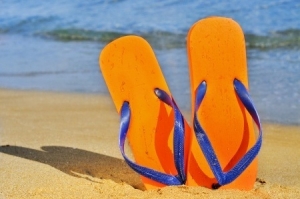Connect With Us
Blogs
Displaying items by tag: fractures
Facts about Lisfranc Injuries
If you follow football you may have heard that Caroline Panthers quarterback, Cam Newton, was put on the disabled list for a Lisfranc injury. While less common than other sports injuries, we at Superior Foot & Ankle Care Center think it’s important to make information about this problem available, especially in the fall since football players are in a high-risk category.
FACT: The Lisfranc joint is located where the long bones of your toes (metatarsals) connect with the bones of the arch of your foot (tarsals). A ligament or tough band of tissue that joins two of these bones is called the Lisfranc ligament.
FACT: Lisfranc injuries can occur in different ways, some of which may occur simultaneously. These include:
- Sprain—overstretching of the Lisfranc or other ligaments in the middle part of the foot
- Fracture—this can be either a full break of a bone in the Lisfranc joint or an avulsion fracture which occurs when a small piece of bone is pulled off
- Dislocation—the bones in the Lisfranc joint are forced out of their normal position
FACT: These types of injuries can happen as the result of trauma, such as a car accident or a heavy object falling on the midfoot, playing football or another contact sport, running or horseback riding. Sometimes, however, it can be caused by something as simple as missing a step on the stairs.
FACT: Signs that you may have injured your Lisfranc joint or ligament include:
- Pain in the midfoot when pressure is applied, like standing
- Swelling
- Bruising or blistering on the arch or top of the foot
- Widening of the foot
- Difficulty bearing weight on the injured foot
FACT: If you notice these types of symptoms, don’t take a “wait and see” approach. Contact our Long Beach office in Douglas Park CA immediately by calling, (562) 420-9800. Our podiatrists, Dr. Victoria M. Foley or Dr. Constance Ornelas will want to examine your foot and will also order x-rays or other imaging studies to determine if the Lisfranc has been injured. In some cases, emergency surgery may be necessary. Otherwise, conservative treatments such as immobilizing the foot with a cast, oral medications and physical therapy can be prescribed.
Flip-Flop Fail
They’re so easy to wear—just slip them on and off you go. In flip-flops your feet feel so free, as if there’s hardly anything there and that’s the problem! There isn’t. At Superior Foot & Ankle Care Center we know many of our patients love flip-flops and wear them nearly every day but unfortunately, it’s a shoe choice that can leave your feet vulnerable to injury and result in serious foot problems. Here’s why:
Increased Risk of Injury—let’s start with the obvious: flip-flops provide very little protection for your feet. Since they are so exposed, your toes are not shielded from getting stubbed and cuts can happen when your foot slides off the shoe. In addition, because there are no sides to hold your foot in place, flip-flop wearers are more likely to sprain an ankle.
Toe Stress—think about the motion required to keep flip-flops on. Your toes are constantly gripping the front of the flip-flop. With extended use, the strain to the toes can cause tendonitis and toe deformities such as hammertoe and bunions.
The Fracture Factor—with literally no cushioning, flip-flops offer zero shock absorption as you walk. The repetitive pounding on the bottom of your foot and lack of arch support can result in stress fractures, heel pain and plantar fasciitis. You may also find that you experience pain in your ankles, knees, hip and back because of the altered gait that comes about with prolonged flip-flop use.
Finding a Better Flip-Flop
Due to the popularity of this type of footwear, some manufacturers have begun to make shoes that offer the easy style of flip-flops but with an eye to lessening the damage to your feet. If you are frequent flip-flop wearer, look for the following
- A built-up centerpiece for arch support
- Flip-flops made of leather instead of plastic or vinyl to reduce blisters
- More substance—if you can bend a flip-flop completely in half it does not have enough cushioning or support
- A back strap
If you’ve been wearing flip-flops as your go-to shoes for a long time now and are experiencing pain in your ankle, toes, heel or forefoot, make an appointment at our Long Beach office by calling: (562) 420-9800. Our podiatrists, Dr. Victoria Foley or Dr. Constance Omelas will examine your feet and make specific recommendations about shoe choices that will be the healthiest for your feet.


